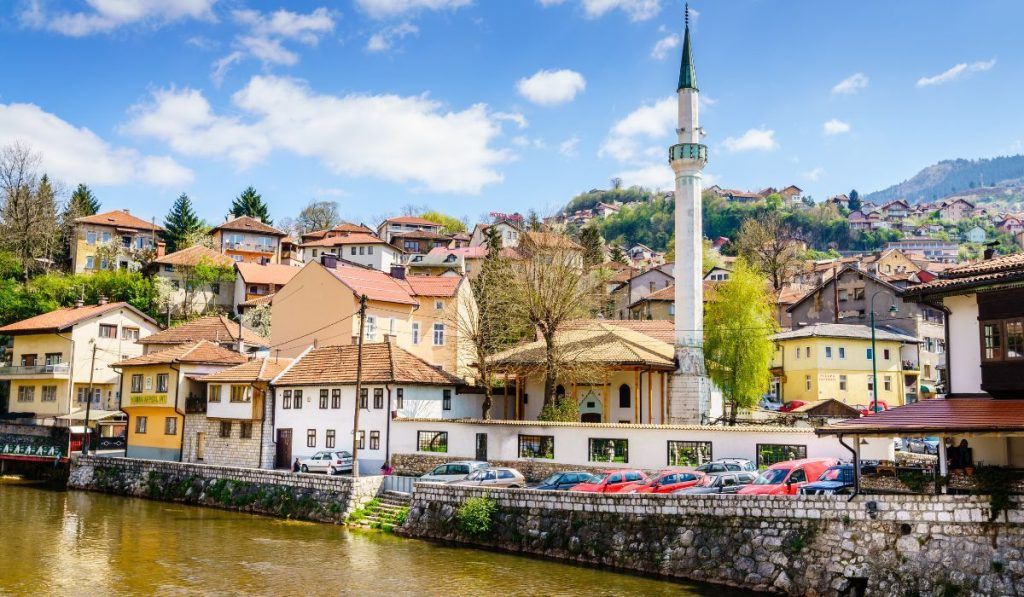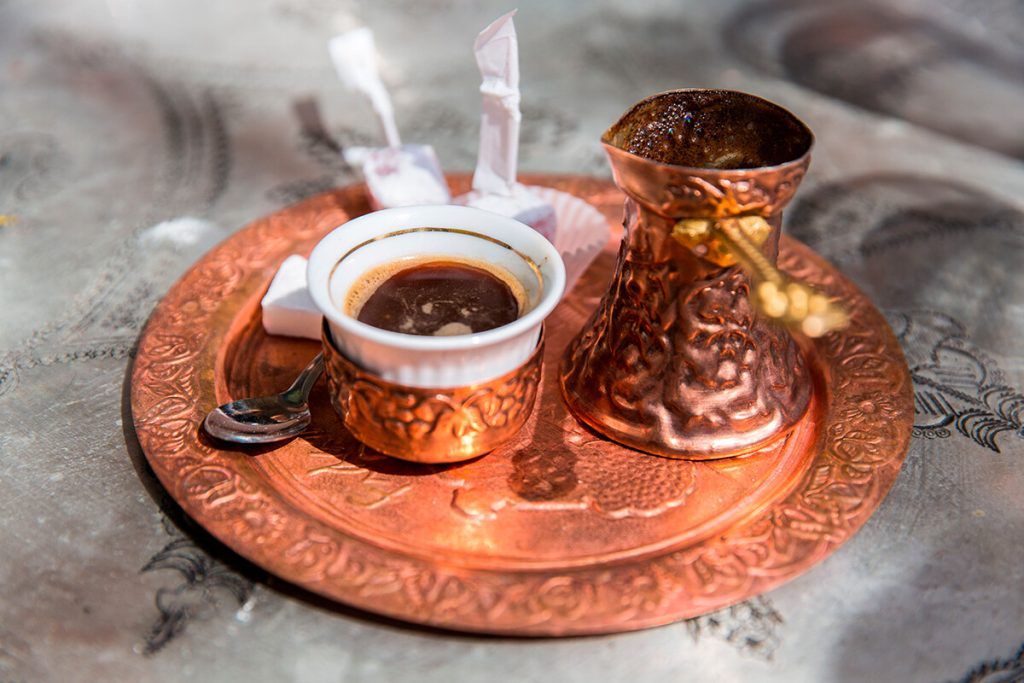1. Sarajevo: History and culture in the capital
Sarajevo, the capital of Bosnia and Herzegovina, is a city full of history and cultural contrasts. It has witnessed important historical events, from Ottoman rule to the recent Bosnian War. Its rich heritage is reflected in the architecture, traditions and the mixture of cultures that coexist in its streets.
The old town of the city, known as Bašcaršija, is one of the most emblematic and vibrant sites in Sarajevo. Founded in the 15th century, it still preserves the essence of the Ottoman past with its mosques, teahouses and bazaars. The Gazi Husrev-beg Mosque, built in 1530, is one of the most important in the region and stands out for its beautiful architecture. In addition, the Sebilj, an iconic wooden fountain in the center of Bašcaršija, symbolizes community life that revolves around water and public squares.

Sarajevo is also known for being a meeting point for various religions. In a short walk, visitors can discover mosques, Orthodox and Catholic churches, as well as synagogues, which highlights the coexistence of different creeds over the centuries. One of the key points of this diversity is the Cathedral of the Sacred Heart of Jesus, a masterpiece of the neo-Gothic style, which is located just a few steps from the mosques and other religious sites.
The recent history of Sarajevo, marked by the Bosnian War, is also present in many of its corners. The Tunnel of Hope, built during the siege of the city, is a touching reminder of the years of conflict, but also of the resistance and unity of its people. Visitors can tour this tunnel and learn how it was used to keep the city alive during the most difficult times.
Sarajevo, in addition to being a testimony to its turbulent history, is a modern city that has managed to keep its rich cultural tradition alive. Between history and the rebirth of the city, visitors will find a place where the past and the present coexist in perfect harmony.
2. The Mostar Bridge: Symbol of union and peace
The Old Mostar Bridge, known as Stari Most, is one of the most recognized monuments in Bosnia and Herzegovina. Built in the 16th century during Ottoman rule, the bridge has been a symbol of connection and unity between the two parts of the city, divided by the Neretva River. With its elegant stone arch, Stari Most not only represents a masterpiece of Ottoman engineering, but also an emblem of Bosnia’s cultural identity.
During the Bosnian War in the 1990s, the bridge was destroyed, becoming a sad symbol of the division and conflict that ravaged the region. However, in 2004, the bridge was completely rebuilt, respecting its original design, and declared a World Heritage Site. Today, Stari Most is a symbol of reconciliation and peace, representing Bosnia’s ability to heal the wounds of the past and look to the future.
The old town of Mostar, where the bridge is located, is a place full of life, with cobbled streets and small bazaars that invite you to explore. The Muslim neighborhood, on the banks of the river, preserves the essence of its Ottoman past, with craft shops, traditional cafes and mosques that add a charming atmosphere. In addition, the Mostar Bridge is famous for the competitions of jumping to the Neretva River from its 21 meters high, an event that attracts both locals and tourists.
The reconstruction of Stari Most was not only an architectural project, but also an act of restoration of the cultural and social heritage of Mostar. Today, the bridge continues to be a meeting point for visitors from all over the world who come to learn about the history of the city and enjoy the stunning views it offers over the river and its surroundings.
Mostar, with its bridge as the main protagonist, is a city that shows how resilience and reconstruction can transform a war past into a present of hope and peace. Plan your trip to Mostar in Bosnia
3. Nature in Bosnia’s national parks
Bosnia and Herzegovina is a natural paradise that is home to an impressive diversity of landscapes, from majestic mountains to crystal clear rivers and virgin forests. Among its natural treasures, national parks are one of the main attractions for nature lovers and ecotourism.

One of the most prominent parks is the Una National Park, located in the northwest of the country. This park, crossed by the Una River, offers an unforgettable experience with its impressive waterfalls, the most famous being Štrbacki Buk. The environment surrounding the park is ideal for outdoor activities, such as hiking, cycling and, above all, rafting. The rapids of the Una River are a key point for the most adventurous, providing strong emotions in an environment of incomparable beauty.
Another relevant natural destination is the Sutjeska National Park, home to the imposing Mt. Maglic, the highest peak in Bosnia. This park is also famous for the Selva de Perucica, one of the last virgin forests in Europe. Its dense vegetation and biodiversity make Sutjeska a wildlife refuge, with species such as bears, wolves and eagles.
The park is ideal for hikers looking for challenging routes and panoramic views of the surrounding mountains and valleys.
The Dinaric Alps, which cross much of the country, are also the perfect setting for activities such as skiing in winter and hiking in summer. Just a few kilometers from Sarajevo, is the Jahorina ski resort, famous for hosting the 1984 Winter Olympics. During the summer, this region transforms into a perfect destination for exploring picturesque villages and mountain routes.
Bosnia, with its national parks and vast areas of untouched nature, is becoming an increasingly valued destination for travelers looking for unique landscapes and outdoor experiences.
4. Bosnian gastronomy: Tradition and coffee
The gastronomy of Bosnia and Herzegovina is a reflection of its rich history and cultural diversity, influenced by the traditions of the Balkans, the Ottoman Empire and Central Europe. Bosnian dishes combine intense and simple flavors, with fresh and local ingredients, offering a unique culinary experience for visitors.
One of the most representative dishes is cevapi, a kind of small meat sausages, usually lamb or beef, which are served on a flat bread called somun. This dish, typical of the Balkans, is very popular in the streets of Sarajevo and Mostar, where vendors offer it accompanied by raw onion, sour cream and sometimes peppers.
Cevapi is a symbol of Bosnian cuisine, and tasting it in a local restaurant is almost a mandatory ritual for those who visit the country.
Another traditional dish is burek, a stuffed puff pastry, usually made of meat, although it can also be made with cheese or spinach. It is served hot and is ideal for breakfast or as an aperitif during the day. Locals usually accompany it with yogurt, which creates a delicious mix between the crispy puff pastry and the juicy filling.
In the field of desserts, Bosnia stands out for its Ottoman influence. One of the best known sweets is baklava, a cake made with layers of filo dough, nuts and syrup.
Other desserts such as hurmadžik and kadaif are also very popular, and all of them are accompanied by the characteristic Bosnian coffee, a strong and thick drink, prepared with very finely ground grains.
The coffee ritual is an important part of social culture in Bosnia, where sharing a cup can last for hours, especially in the quiet afternoons of Sarajevo.
Bosnian coffee is not only a drink, but a tradition that reflects the hospitality and relaxed rhythm of daily life in Bosnia. Often, it is served in small metal cups, accompanied by a local sweet.
Drinking coffee in one of Sarajevo’s historic teahouses is an experience that connects visitors with the country’s cultural soul.

The gastronomy of Bosnia, with its simple but deep flavors, and the experience of sharing a coffee, offer travelers an authentic insight into life in this fascinating corner of the Balkans.

